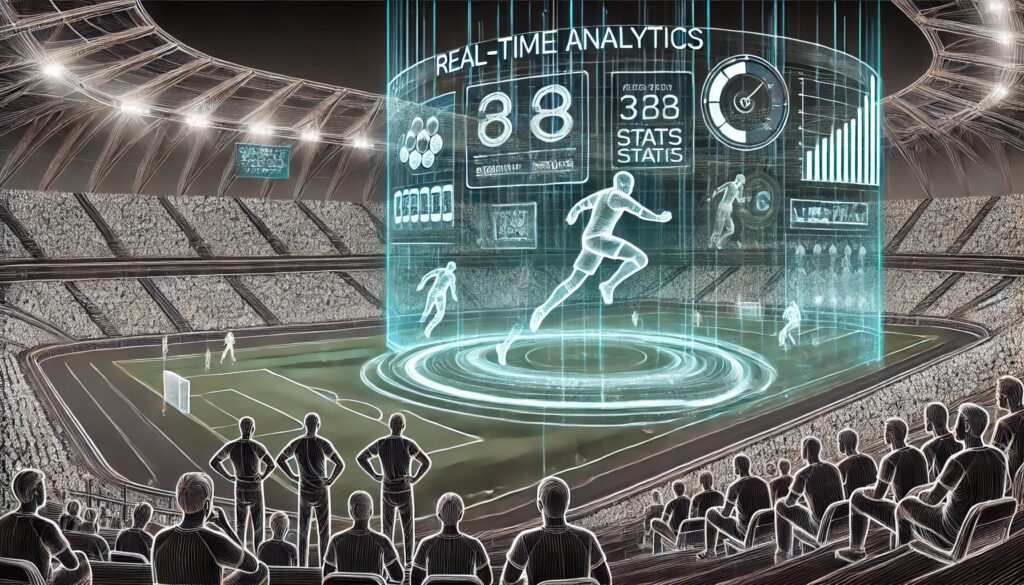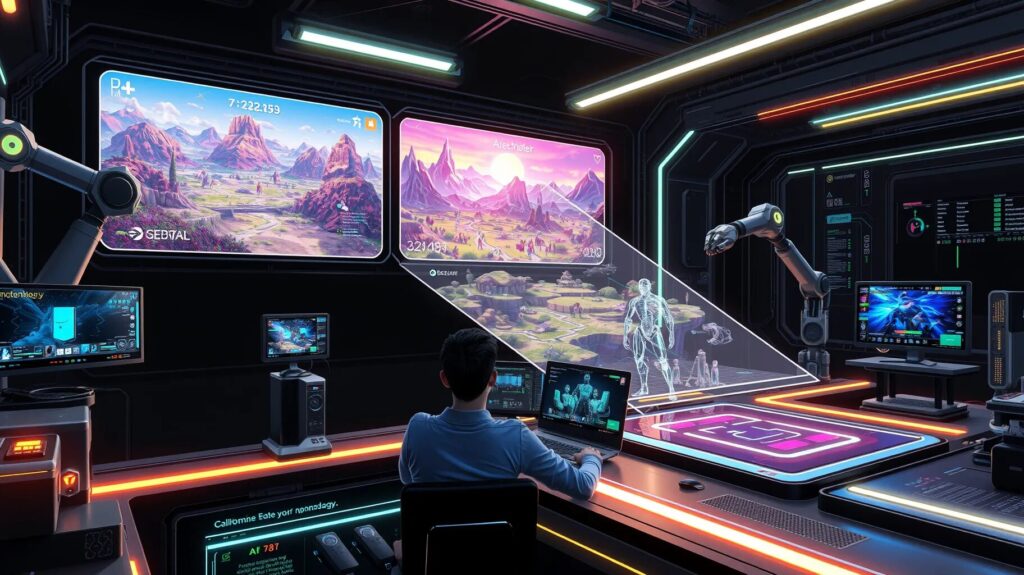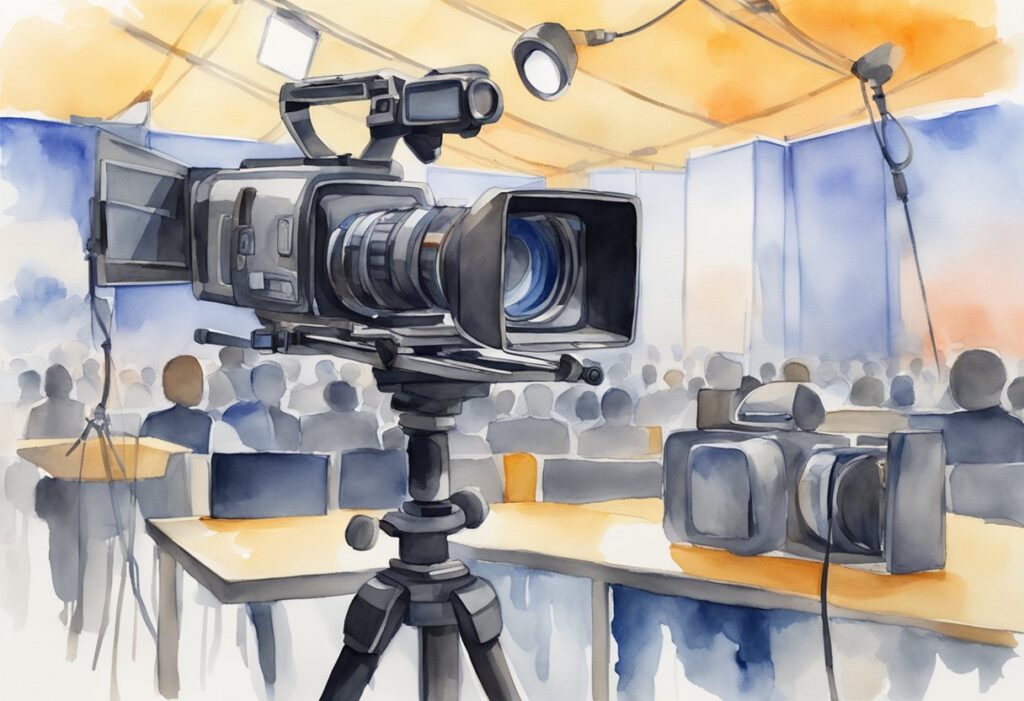
Virtual environments are becoming increasingly immersive, opening new frontiers for exploration and self-discovery.
One of the most exciting of these is the concept of digital dreamscapes—spaces where users can dive into personalized, interactive worlds inspired by their subconscious minds. With the integration of AI, virtual reality (VR), and biometric data, dreamscapes are transforming into interactive environments accessible to anyone interested in self-exploration or emotional healing.
Imagine stepping into a world that adapts to your thoughts, emotions, and desires—a space that responds to who you are on a deeper level. This dreamscape technology goes beyond traditional VR, bringing both therapeutic potential and new forms of social engagement to the virtual realm.
Virtual Dreamscapes: What They Are and How They Work

Dreamscapes are built using AI-driven algorithms and real-time sensory data, creating personalized, dreamlike worlds for each user. Unlike conventional VR, dreamscapes continuously adapt based on user input, including heart rate, sleep cycle, and brainwave data. By merging AI and VR, dreamscapes mimic the fluidity of real dreams while offering custom-tailored experiences.
How Dreamscapes Are Created
AI analyzes biometric and sensory data to interpret a user’s needs, helping to shape an environment that matches their mood or goals. These dynamic environments can change from serene and calming to thrilling and exploratory, depending on the user’s real-time data, making each dreamscape experience uniquely personal.
Real-Time Interaction and Adaptation
Dreamscapes’ immersive, responsive nature is what sets them apart. As users engage, the dreamscape changes in real time to reflect their emotions. For example, if a user’s heart rate increases due to anxiety, the scenery may shift to include calming elements like tranquil waters or soft lighting. This adaptability makes dreamscapes a powerful tool for managing emotions and enhancing mental wellness.
Therapeutic Potential of Dreamscapes
Dreamscapes also hold great potential for mental health therapy. By offering controlled environments, therapists can use these virtual spaces to guide users through confronting fears, reducing anxiety, or even encouraging relaxation and positive visualizations. This form of guided dreaming brings self-soothing to a new level and allows for novel approaches to mental health care.
Social Interaction in Dreamscapes: A New Level of Connection
Dreamscapes aren’t limited to individual experiences; they offer exciting possibilities for shared virtual interactions. Imagine meeting with friends in a dreamscape where the environment changes based on each participant’s emotions, creating a shared yet deeply personal experience. Unlike conventional social media, these shared dreamscapes offer unique forms of non-verbal connection and collaboration.
Meeting Friends in a Shared Dreamscape
In shared dreamscapes, users can create an environment together, with each person’s emotions subtly influencing the setting. This unique approach to social interaction allows for memorable, one-of-a-kind experiences. For instance, a calming atmosphere may encourage heartfelt conversations, while vibrant surroundings set the tone for celebratory gatherings or play.
Strengthening Empathy and Emotional Connection
Shared dreamscapes allow friends to experience each other’s emotional states in a new way. Visual and sensory cues within the environment reflect emotions, making it easier to understand and empathize. This type of interaction can strengthen relationships and enhance emotional bonds, bringing an element of deep connection to virtual interaction.
Collaborative Creativity in Virtual Worlds
Dreamscapes also foster collaborative creativity. Users can build and design dream-inspired worlds together, making it ideal for group projects, social gaming, or even group therapy sessions. This interactive space encourages teamwork and shared experiences in a way that traditional VR or social media simply can’t.
Creating Personalized AI “Dream Guides” for Sleep Insights

AI-powered dream guides are a transformative development in sleep analysis, offering tailored insights and even influencing dreams to enhance mental wellness. By using machine learning, dream guides analyze sleep data to provide personalized suggestions that improve sleep quality and potentially shape dreamscapes for therapeutic benefit.
What Is an AI Dream Guide?
An AI dream guide acts like a virtual sleep mentor, gathering data from wearables and smart devices to assess sleep patterns. These dream guides process REM cycles, movement, and breathing rates to offer insights into improving sleep quality and mental well-being.
Gathering and Interpreting Data
Dream guides continuously monitor and interpret sleep data, highlighting disruptions or patterns linked to stress, anxiety, or low sleep quality. This data-driven approach allows users to understand what may be impacting their rest, providing actionable advice based on individual habits.
Dream Recommendations and Interventions
Dream guides go beyond analysis by offering personalized dream suggestions. If stress affects sleep quality, for example, the dream guide might introduce calming imagery or relaxing scenarios into the dreamscape, supporting more restful sleep. This active intervention fosters a deeper, more fulfilling sleep experience.
Benefits of an AI-Driven Sleep Mentor
AI dream guides are ideal for individuals struggling with sleep disorders or seeking a deeper understanding of their rest. With tailored recommendations and ongoing support, users can work towards healthier sleep patterns and wake up feeling rejuvenated.
Integrating Dream Guides into Daily Life
Dream guides integrate seamlessly into daily routines through smartphone apps and wearable devices, giving users easy access to their sleep data and progress. With gamified features and sleep goals, users are motivated to reach milestones that support better health and wellness.
Empowering Users with Sleep Insights
Dream guides empower users to take control of their sleep and well-being, offering valuable insights to help them build a stronger relationship with their body’s natural rhythms. This awareness can lead to better mental health and improved emotional resilience over time.
Long-Term Benefits for Mental Health
Consistently using a dream guide can yield long-term mental health benefits. Improved sleep quality is linked to enhanced mood, cognitive performance, and emotional resilience. By helping users address sleep challenges proactively, dream guides become an invaluable asset for overall wellness.
Further Reading or Resources
For more insights on the potential of dreamscapes and sleep optimization, explore these resources:
- National Institute of Mental Health on Sleep and Mental Health
- American Psychological Association: Sleep’s Role in Mental Health
- Stanford University’s Center for Sleep Medicine
FAQs

What are dreamscapes, and how do they work?
Dreamscapes are immersive, AI-driven virtual environments tailored to each user’s emotions, thoughts, and sensory input. They rely on real-time biometric data, such as heart rate or brainwave activity, to adapt and respond to users’ needs in the moment. This creates a dynamic, dreamlike experience that feels deeply personal, promoting relaxation, exploration, or even mental wellness.
Can dreamscapes be used for mental health therapy?
Yes, dreamscapes offer significant potential for mental health applications. Therapists can guide clients through controlled, safe virtual spaces to help them confront fears, manage anxiety, or practice relaxation techniques. The responsive nature of dreamscapes also makes them effective tools for self-soothing, emotional release, and resilience building.
What is an AI dream guide?
An AI dream guide is like a virtual sleep coach that uses data from wearables or smart devices to assess and improve sleep quality. It gathers insights from your REM cycles, movement, and other sleep-related data, offering personalized feedback and even suggesting dream content to support more restful sleep.
How can dream guides improve my sleep quality?
AI dream guides provide tailored insights into your sleep patterns and suggest adjustments to improve rest. For example, if stress disrupts your sleep, the guide might encourage calming dreamscapes or suggest relaxing activities before bed. Over time, this helps you develop healthier sleep habits, which contributes to overall well-being.
Can I interact with friends in a dreamscape?
Yes, shared dreamscapes allow you to meet friends in an interactive, co-created virtual space. The environment adapts based on each person’s emotional input, fostering a unique, empathetic experience. This shared, responsive interaction helps deepen social bonds in a way that traditional social media or VR doesn’t offer.
Are dreamscapes safe to use for everyone?
Yes, dreamscapes are generally safe, but individual responses can vary. For people with certain mental health conditions, such as severe anxiety or PTSD, it may be wise to use dreamscapes under professional guidance to ensure a positive experience. With responsible usage, dreamscapes can provide a safe, immersive escape, and users always have control over entering or exiting the experience.
How are dreamscapes different from regular VR?
While regular VR relies on pre-programmed experiences, dreamscapes are AI-driven and fully adaptive. They react to your emotions, thoughts, and real-time data, making each experience unique and personal. In dreamscapes, environments shift dynamically based on biometric feedback, whereas traditional VR remains the same regardless of user input.
Do I need special equipment to use dreamscapes?
Yes, accessing dreamscapes typically requires VR headsets, sensors, and possibly wearables that monitor biometric data (such as heart rate or brainwave sensors). However, as technology advances, more accessible options like smartphone-based VR or standalone wearables could make dreamscapes available to a broader audience.
Can dream guides interpret my dreams?
Dream guides don’t interpret dreams in the traditional sense but provide insights based on your sleep patterns and experiences within the dreamscape. They analyze data like sleep cycles, REM phases, and any recorded changes in physical responses to make recommendations or suggest potential dream scenarios, supporting better rest and mental wellness.
Are dreamscapes customizable?
Absolutely. Dreamscapes are highly customizable, adapting to your unique biometric and sensory input. You can select specific environments or themes, and the AI continuously personalizes the experience based on your mood or preferences, making each journey into a dreamscape as distinctive as your state of mind.
Can dreamscapes help reduce stress or anxiety?
Yes, dreamscapes can be powerful tools for managing stress and anxiety. By creating calming, responsive environments, dreamscapes help users find relief through immersive relaxation techniques. The AI adapts to emotional cues and can introduce soothing visuals, sounds, or guided activities, making it easier to relax, process emotions, or even practice mindfulness in a highly personalized setting.
Is it possible to “lucid dream” within a dreamscape?
While not exactly like traditional lucid dreaming, dreamscapes allow a similar level of control and awareness. Users can consciously explore and interact with the environment, influencing their virtual surroundings and making choices within the experience. This controlled, awake-like interaction gives users a feeling of agency similar to lucid dreaming, allowing for creative and meaningful experiences.
Can dream guides help with sleep disorders?
Yes, dream guides may assist with common sleep disorders, such as insomnia or irregular sleep patterns, by offering personalized recommendations. By analyzing your sleep data, a dream guide can suggest behavioral changes, ideal bedtimes, or relaxation techniques to improve rest. Over time, users can establish healthier sleep routines with the guidance of this personalized AI.
Do dreamscapes work even when I’m awake?
Yes, dreamscapes are designed to be experienced in both waking and sleep-like states. Some users engage with dreamscapes for relaxation or creativity during the day, while others might use them as part of a pre-sleep routine to prepare for restful sleep. The immersive environment can provide benefits whether you’re fully awake or in a meditative, sleep-ready state.





